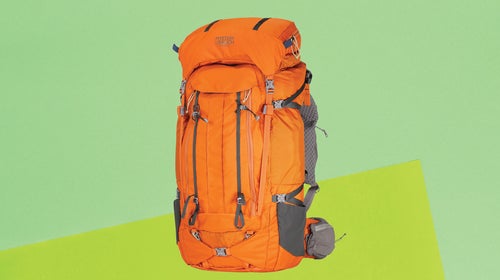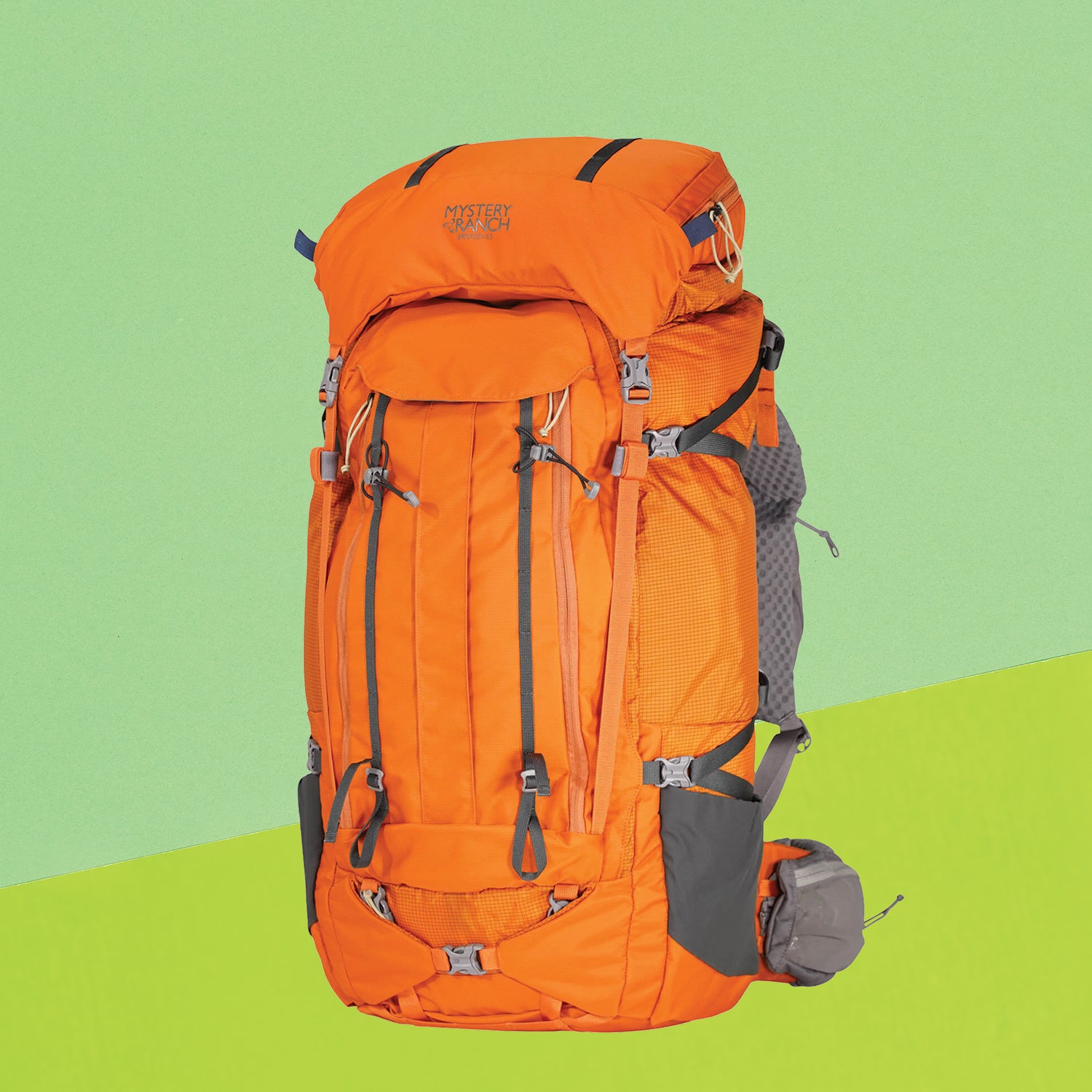Technically, we carried the Bridger 65 to the top of Mt. Rainier and to the bottom of the Grand Canyon. But it really felt like the Bridger was carrying us. Thanks to a supportive suspension, plush hip belt padding, and best-in-test durability, we were able to trust this pack with the harshest adventures on our bucket lists.
The reliable carry comes courtesy of a four-millimeter-thick, spring-steel perimeter frame, one of the burliest on any pack we tested this season. It attaches to the shoulder harness via a pair of sliding steel rails, which provide just enough give and flex for the pack to move with us; we never experienced shifting or sway, whether we were hammering down the Bright Angel Trail or fleeing rainstorms in Olympic National Park.
Our guide testers were particularly impressed. They reported zero hip bruising or shoulder soreness, even while lugging 55 pounds of gear through the Grand Canyon. Thick padding on the hipbelt and broad shoulder straps helped further distribute the weight of our heaviest loads.
“It was great for work trips because I could carry all the extra gear I needed,” reported one tester after over 100 miles of guiding in the Southwest. “Throughout, the pack was super comfortable.” Pads of mesh-wrapped foam lift the back panel away from the spine, permitting moderate airflow that we appreciated in Utah’s Bryce Canyon and Grand Staircase-Escalante National Monument.
The Bridger 65 isn’t a one-trick pony, either. Look past the bomb-proof carry, and you’ll find a thoughtful feature set that pleased even our pickiest organizational fanatics. There are two large hipbelt pockets, two running vest-style chest pockets (Hallelujah), and lateral pouches that each fit a water bottle. Twin zippered compartments line the dorsal panel, and the roomy top lid was big enough to fit snacks, a first-aid kit, and other on-the-go essentials.
Over a season of hard testing, the Bridger survived repeated altercations with sandstone and juniper with nary a scratch, thanks to the 330-denier Robic nylon covering the pack’s back and base (the side panels are made of a 100-denier ripstop nylon). Though this was one of the pricier packs we tested this season—and the heaviest—we expect it to last a decade or more before it needs replacing.


